Every great training system has a history, every great system has a long lineage of coaches, and every great system has guided countless winning athletes. What is the history of the system you are following? Does it have one?
Every great training system has a history, every great system has a long lineage of coaches, and every great system has guided countless winning athletes. What is the history of the system you are following? Does it have one?
Recently, I was having lunch with Dan John when a special about Bill Walsh came on the TV. This got us talking about coaching trees in the NFL. When you have some time, Google the name of your team’s coach; it is amazing to see how many branches these coaching trees have. It takes time, spanning decades and generations, to arrive at a great coaching philosophy. Best to follow those who have gone before you.
The title of my favorite Dan John book is Never Let Go. He pledges to never let go of the lessons that passed down through his coaching tree and formed his training philosophy/system. I asked him to map out those who came before him in his own lineage. He entertained me with a brief history lesson and a discussion of systems. Here, I will cover that history.
Every great mind in coaching has been influenced by the work of those who have come before them.
The Base of Dan John’s Coaching Tree
Dan is part of a disappearing generation that grew up reading Strength and Health magazine in the 1960s. The magazine, published from 1932 to 1986, taught that the answer to all athletic and physique goals was the combination of Olympic lifting and classic bodybuilding. The basics were performed with heavy weights and an eye towards mastery.
As a kid, Dan wanted to be an athlete, but realized he needed to be a lot bigger and a lot stronger. Those Strength and Health magazines put him on the path. After spending some time beating up his 110-pound Ted Williams weightlifting set, he entered high school sports. You probably have read about the Southwood weightlifting program. Dan explained that the systems created by his coaches were fantastic for building a solid to great high school player. His next coach would teach him how to reach elite levels of athletics.
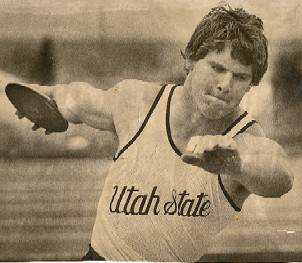
Starting with the basics led to a successful collegiate throwing career for Dan.
Developing a Training Philosophy
Dick Notmeyer, an Olympic weightlifting coach at Pacifica Barbell Club, was the first coach with a true training philosophy to take Dan under his wing. Dick preached several principles and rules here are a few:
- Train How You Compete: Dick would not allow his athletes to do anything in training that they wouldn’t do on the platform. This meant training was comprised almost entirely of full cleans and snatches, with no power variations. You can see this later in Dan’s track and field coaching: runners run, throwers throw, and jumpers jump.
- Repetitions: Dick felt that “more reps” was the answer to most problems. You simply needed more time under the bar, and over years. Time and reps became a reoccurring theme throughout Dan’s athletic career.
- Protein Answers All Problems: Lifts stalling? More protein. Girls don’t like you? More protein. I’m glad I was not alive to experience a car ride with Dan after putting away some of Bob Hoffman’s protein shakes.
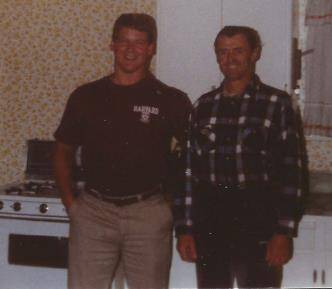
Dan and coach Dick Notmeyer.
Dick also had a three part equation for weightlifting success:
Leg Strength + Pulling Strength + A Calm Mind
Dan weighed 162 pounds as a senior in high school. Four months later, he left Dick’s weighing 202 and ready to handle the rigors of Divisions I athletics.
The Influence of College Athletics
After a short stop at Skyline College, Dan went to Utah State to throw the discus under Ralph Maughan. Ralph was a WW2 vet awarded the Purple Heart and Bronze Star. He also was a multiple sport collegiate athlete, first round NFL draft, and track coach for over forty years. Coach Maughan had ten commandments. Here are the top three according to Dan:
- Little and Often Over the Long Haul. Ralph told his athletes that to become an elite thrower you needed to lift three days a week and throw four days a week – and then do that for eight years. Again, that time factor.
- The Two-Day Lag Rule. You should place an easy workout two days before competition. If you competed on Saturdays, Thursday would be light and easy.
- Continuous Acceleration. This was in reference to throwing. Ralph wanted you to continue to accelerate throughout the entire throw, rather than blasting through the start and slowing down. This is also great advice for how a training cycle and even a career should look: start slow and build.
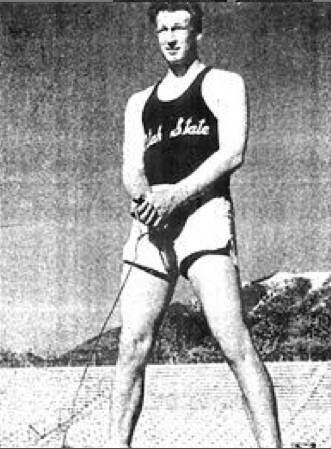
Coach Ralph Maughan of Utah State.
The Hercules Barbell Club
The next point in Dan’s coaching lineage is Dave Turner, whom he met in 1980. Dave leads Hercules Barbell Club in Salt Lake City. From Dave, Dan took three major principles:
- Accumulate your strength over years.
- Get into condition for your sport by doing your sport.
- Come in a little undertrained versus overtrained (this is very hard to follow mentally)
“That focus is the essence of Dan’s training: a relentless striving for mastery in the fundamentals done as often as possible for decades.”
We have covered decades of accumulated training knowledge making up Dan’s coaching tree, and Dan’s coaches were in turn influenced by numerous other coaches. The lineage is long and continuous. The coaches above are the cornerstones of Dan’s coaching foundation, but there have been numerous other influences from Tommy Kono to Percy Cerutty, and more recently Pavel Tsatsouline, Mark Twight, and Josh Hillis.
Dan’s Current Coaching Philsophy
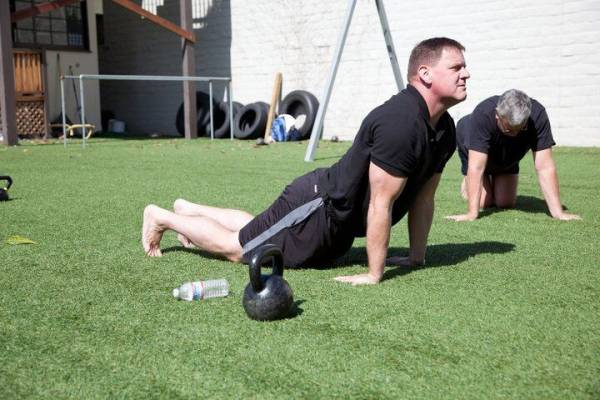
Dan’s coaching philosophy today has evolved from the lessons from his mentors.
Now, over forty years later, we arrive at Dan’s work and the principles he imparts on our generation of coaches and athletes. Anyone who has read his work knows he loves to work in threes (maybe that is his theology background speaking). Over the years Dan has given numerous sets of principles but the foundation is this:
- Movements, not muscles. Most of you have hopefully heard of Dan’s fundamental human movements by now. To repeat, we should push, pull, squat, hinge, carry, and do some groundwork in our training. Coaches Maughan, Notmeyer, and Turner all insisted on mastery of the fundamentals. In Dan’s gym, we touch each of the movements every time we train.
- If it is important, do it every day. If not, don’t do it at all. This comes from the great wrestler Dan Gable, but the same principle was emphasized by Dan’s coaches. Remember Ralph Maughan: lift and throw as often as possible over a long period of time. Again, we do the fundamentals every time we train, day in and day out.
- Repetitions. The best way to improve is to put in the work. You cannot hack the process. Progress comes from continually striving for mastery over thousands of reps. Dan speaks about how different lifts and loads require different rep totals, but the key is always the same: lay a solid moment foundation with lots of quality repetitions, then your body will be ready to tolerate high-intensity work.
Our group trains at Dan’s facility every day at 9:30am. It is humbling to know the system we follow has roots that date back into the 60s, and honestly much further back. Every day we come in with an eye to future training sessions. Come in, do the work, repeat tomorrow. I’d challenge you to find another gym that does as many reps of the fundamentals.
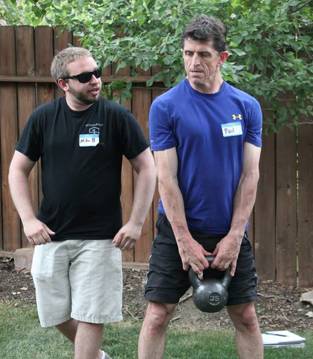
Coaching my client through the fundamentals during one of our group sessions.
Striving for Mastery
That focus is the essence of Dan’s training: a relentless striving for mastery in the fundamentals done as often as possible for decades. It would be impossible to maintain focus over that time without an incredible training community and a time-tested system with a long lineage. Who are you around and who are you following?
I hope this puts into context the amount of knowledge and time that goes into the making of a lasting training system. The best part is that anyone who reads and applies the principles of Dan John, or any coach with a strong lineage, is carrying on the tradition.
Check out these related articles:
- Dan John – Lineage and Longevity
- 3 Training Lessons Learned While Training With Dan John
- Increasing the Deadlift for the Collision Sport Athlete
Photo 1 courtesy of Dan John.






